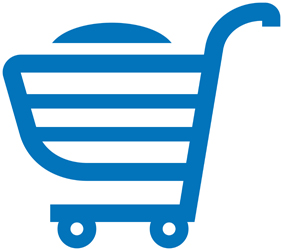A successful e-commerce site requires profitable stock, a finely-tuned marketing message, and frequent SEO audits to ensure that it is still in line with the latest search engine best practice guidelines. If your online store isn’t ranking well in search engine results pages (SERPs), it’s time to address the situation. One helpful place to start is finding the weak areas of your online store, and learning how they can benefit from some simple search engine optimisation.
Optimising an e-commerce site for search engine visibility can be a challenge, especially when there isn’t much content on offer for visiting search engine crawlers. In an effort to provide customers with a smooth journey from browsing to purchase, online stores are adopting visually appealing designs with clean lines and minimal text. So, unlike blogs and news websites, e-commerce sites may not use the type of content usually recommended in search engine guides. However, the best of both worlds can be achieved by looking beyond the obvious choices for optimisation, and delving into other areas of the site to boost SEO.
Assuming the store layout is user-friendly, complies to distance selling regulations and has been designed with accessibility guidelines in mind, addressing the following five areas will see you well on the way to gaining ranking success.
Meta Descriptions & Page Titles
These should be unique for every page and be consistent in format. If using an e-commerce software solution, check meta descriptions and titles are not being auto-generated, and subsequently duplicated across the site. If this is the case, most solutions should allow you to manually enter unique meta descriptions and titles for each page – check with your individual provider.
Keep meta descriptions to 155 characters or less, and try to include a call-to-action as search engines, such as Google, often display this as a snippet underneath the page title in SERPs (as illustrated below). Titles should be kept to 70 characters or less to avoid truncation by search engines in results pages.
Product Descriptions
These will form the main body of text on your page and should be closely related to the title. The key takeout here is not to keyword stuff – use variants of your chosen keywords for the page instead of repeating the same words over again. For example, if the keyword is ‘Sony smartphone’, variants could be ‘Android mobile’ or ‘Sony mobile phone’. Including information on the product’s uses, colours and matching items is also a great way to naturally add your selected keywords into the body of the text.
Search engines, in particular Google, will penalise you for applying black-hat tactics such as keyword stuffing, and this gets very repetitive for the customer too! Free software such as Google’s Keyword Tool can assist with alternative words and phrases.
Site Architecture
It is critical to design an e-commerce website with a clear, hierarchical structure. This is not only for SEO purposes, but also, and more importantly, for end users. Online customers want to buy swiftly and efficiently; they will instantly go elsewhere if your online store navigation is clumsy and illogical.
First class URL structure will allow shoppers to find what they want quickly, whilst also working wonders for your search engine optimisation. Ideally, e-commerce site structure should be limited to three links deep – customers will see the home page first, then the chosen a product category (first link), then the chosen product sub-category (second link), finally landing on a product page (third link). Obviously, there are exceptions to every rule, and your online store may be a little more unique than this, but bear in mind that if it takes customers more than a few minutes to find what they want, they will probably go elsewhere. Asking customers to take a short survey on their shopping experience or employing a usability tester are the best ways to decide what structural work is required, as well as providing valuable user feedback.
Category Pages
It’s common to overlook the SEO benefits of category pages as an e-commerce site evolves, and all too frequently these pages can result in a mere collection of images, with the only text on the page being the sub-category title links. Obviously, there would be little for a search engine crawler to read on a page such as this, meaning achieving a high ranking for the page will be much harder.
Adding in a few unique and engaging paragraphs about the products within the particular category will provide the page with crawl-worthy content when the search engine bot next pays a visit.
Get To Know Your Data
Bing Webmaster Tools, Google Analytics, or other third-party software can offer an excellent insight into where your search engine optimisation efforts may be going awry. Along with providing data on customer profiles and demographics, these tools can offer invaluable advice on SEO issues that need attention. For example, Bing Webmaster Tools has a great ‘SEO Analyzer’ feature which pinpoints where work is needed. These services take little effort to set up and soon become invaluable to e-commerce site managers.
After implementing the above steps, you should start to see some improvement in search ranking positions for your online store.






